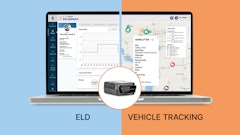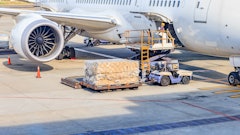
The Coronavirus disease (COVID-19) threat hasn't stopped the world from turning. Time is passing, and spring is transitioning into summer. Companies in the U.S. food supply chain have proven they can still deliver products around the country. Though pandemic life has been unusual, freight is still expected to follow some of the same trends as previous years.
In general, consumers buy more food products during summer, a phenomenon that’s continued every year for decades. Food and beverage demand rises first in Southern states, then continues to grow as temperatures climb throughout the nation. Since we’re approaching the peak season for food and beverage shipping in real time, let’s explore a typical timeline:
- May-June: With grilling season around the corner, retailers start ordering summer inventory. With so many production plants and warehousing locations in Mexico, cities that sit on the Mexican-U.S. border see an increase in food and beverage freight, boosting the need for global logistics. Additionally, California and the Pacific Northwest begin shipping more wine. As the second quarter comes to a close, volumes soar, especially for reefer loads.
- June-July: Food and beverage freight continues to flow out of California and Texas. Summer barbecues call for beef and beer, so America’s southern border, Northern Texas, and the Great Plains move at full speed to supply these items. International food transportation is critical to move food products across the border at this time.
- July-August: Independence Day sparks a spike in demand for food and beverage products, which gradually decreases after the 4th of July. Activity among logistics providers reflects this shift and dips temporarily.
- August-September: As Labor Day approaches, companies ramp up domestic and international operations to meet rising demand. Food and beverage supply chains have all-hands-on deck as America prepares for big summer celebrations.
Modest margins and colossal competition for food companies
Low profit margins are characteristic of the food and beverage industry. Though it's an essential industry that’s not prone to serious market changes or economic cycles, food and beverage yields low earnings when compared to other business sectors.
Beverage companies generate the highest profit margins — about 5.8% — of the food and beverage industry, while food businesses average a figure of 4.6%. Food distributors operate on 2% profit margins. (The fact that some food producers earn negative revenues explains the gap between food and beverage margins.)
Often pocketing only a couple cents per item, traditional grocery retailers observe profit margins of 1-3%. Their road to revenue is paved with volume; they make money when customers purchase food products in bulk. This is especially true for packaged foods, meat and produce. Grocery chains with different locations benefit from running multiple stores, which enable them to split administrative expenses. It’s also worth noting that 2% profit margins add up with million-dollar grocery sales every week.
Specialty grocery stores in the natural, organic and gourmet realms enjoy larger margins — from 5-10% — than their conventional counterparts. These retailers often employ more service staff, which translates to higher labor costs, to provide more personalized shopping experiences.
Competition is high among grocery stores no matter which niche they fill, and customers are price sensitive. To retain customers, grocery stores must find the balance between profit and customer loyalty.
For food companies, on-time delivery is key
Food and beverage companies don’t just compete with other businesses that play in the same space; they also have another formidable foe—time.
Food manufacturers must deliver their products to distribution centers as fast as possible to avoid on-time/in-full (OTIF) fees and maximize the time products spend on shelves.
The OTIF delivery metric uses the purchase order to determine if a shipment arrived at the drop-off location on time and in the right quantity. According to an article by McKinsey & Co., “about 25% of deliveries arrive more than two hours before their scheduled delivery appointment. Unloading those deliveries early can disrupt distribution center operations, while holding trucks until their scheduled slot [can leave] assets standing idle, consuming industry capacity while incurring demurrage costs. By contrast, only 4% of shipments to retailers arrive more than 12 hours late, a delay that [can] hit on-shelf availability.”
Clearly, food manufacturers walk a fine line when it comes to timing deliveries. Reputable logistics partners know how to handle this.
The second reason for food and beverage companies to be concerned about time is product shelf life of perishable items. Businesses only have so much time to sell a product before it goes bad, and the clock starts ticking as soon as the item is produced. The product can’t be sold until retail workers have received it, marked it for sale and placed it in the aisle. If food and beverage companies don’t maximize the time each product spends on the shelf, they risk losing the sale.
Planning ahead is the best way for businesses to reduce OTIF fees and make the most of product shelf life. Food and beverage shippers that can give logistics providers advance notice and lead time for orders will encounter fewer disruptions in their supply chains, moving products from warehousing to inventory without delay.
The impact of the COVID-19 health scare on food companies
In many ways, the Coronavirus has turned the food and beverage supply chain upside down. Companies in food logistics have experienced financial hardship, slower demand and a shift in consumer preferences. Demand has veered from restaurant to grocery in real time, prompting the food industry to follow suit and adjust their processes for retail. Because of these changes, food and beverage shippers are projected to work harder than ever to cut costs during peak season this year.
According to Per Kristian Hong, partner at Kearney, “Companies can start to pivot, but there is no question we’ll see disruptions because of coronavirus.”
The pandemic is leaving a mark on every player in the U.S. food industry.
Agriculture, for instance, is struggling to supply retailers because of labor limitations.
An article by The LA Times says, “[agriculture] operations dependent on foodservice clients could suffer irreparable economic harm. The inability of the retail side to absorb the unused supply could leave a paradox of empty bins in grocery stores while food rots in the fields.”
Food distribution is another example. Distributors that cut expenses will lift pressure from profit margins. They can also “right-size” operations or transition into retail or “other segments ... that might be up and running,” notes Mark Allen, chief executive officer of the International Foodservice Distributors Association (IFDA).
These tactics only keep water out of the boat though. When major customers like restaurants, schools and hotels struggle, food distributors absorb the respective financial impacts. Here are some quick facts that convey the gravity of the situation:
- One IFDA source predicts the food distribution industry — which is normally worth $280 billion — will lose around $24 billion in the next few months
- Food and beverage sales are down 15-50%
- In 2018, consumers spent $678 billion at restaurants and $627 billion at grocery stores
- The National Restaurant Association anticipates the restaurant industry will lose $225 billion and 5-7 million jobs in a matter of months
- Large corporations are facing issues with liquidity, purchasing power and everyday operations
Without a doubt, the murky financial outlook and stagnant demand give food and beverage companies plenty of reasons to cut costs where they can.
Partner with a logistics provider who can meet on-time delivery needs
Food and beverage companies are shipping smaller volumes than they were pre-pandemic, but there’s pressure to deliver loads faster now. (This is especially true for perishable freight.) Food shippers who normally use full truckload (FTL) service for full-size or partial loads are currently faced with the choice of paying more for the high-quality FTL service they’re used to (knowing they might not be able to fill the whole truck) or using less-than truckload (LTL) service, the less-dependable alternative that’s prone to damage and delays. Even though shippers don’t want to overpay or buy unreliable logistics service, out of the two, they’re picking LTL shipping to save money.
Wondering if there’s a better option?
Food and beverage shippers don’t need to book FTL just to meet OTIF requirements.




















